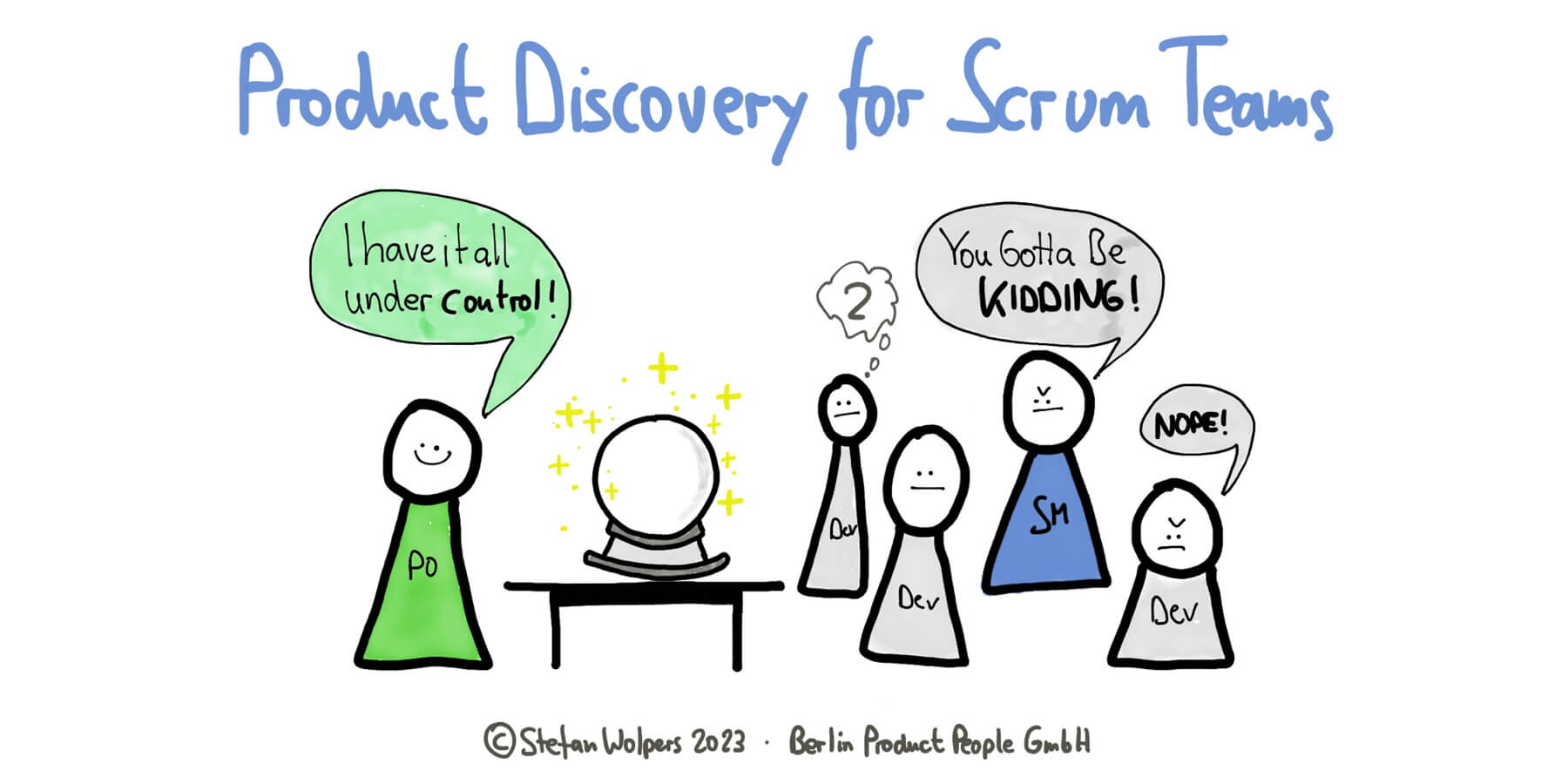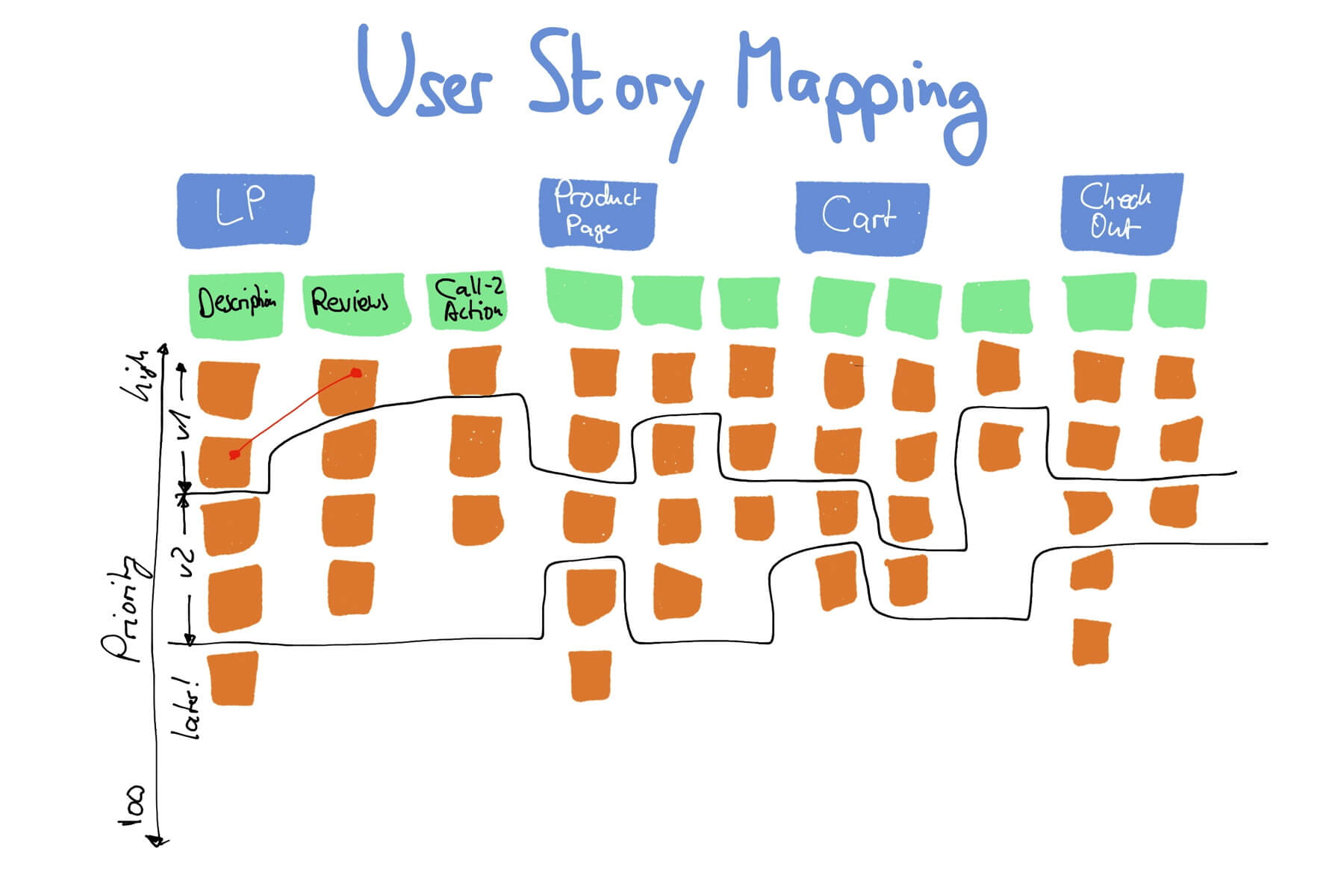Product Discovery for Agile Teams
Scrum Tools, Part 2: From Design Thinking to Lean UX to User Story Mapping.
Join the DZone community and get the full member experience.
Join For FreeTL; DR: Product Discovery for Agile Teams
While Scrum excels at building and releasing Increments, it does not guarantee that those are valuable—garbage in, garbage out. Scrum teams can equally make things no one is interested in using. The critical artefact to create value is the Product Backlog, “an emergent, ordered list of what is needed to improve the product.” (Source.)
However, Scrum does not elaborate on how the Product Owner identifies Product Backlog-worthy work items. That would be the job of the process that feeds into the Product Backlog: product discovery.

Learn more about which frameworks have proven useful to augment Scrum with product discovery practices.
Why the Scrum Guide Lacks Product Discovery as a Concept
The Scrum Guide 2020 emphasizes the role of the Product Owner in managing the Product Backlog but does not define the product discovery process. This omission aligns with the Agile Manifesto’s principles that value “individuals and interactions over processes and tools” and “customer collaboration over contract negotiation.”
My take is that the Guide deliberately leaves the product discovery process open-ended to encourage POs and teams to find a practice that suits their unique context, thereby promoting innovation, collaboration, and customer-centric decision-making. Scrum essentially trusts the PO’s ability to discern what holds value for the Scrum Team’s customers.
The good news is that there are plenty of valuable practices and frameworks that help Product Owners and Scrum teams with product discovery, for example:
Design Thinking
Design Thinking is a five-stage, user-centred problem-solving practice widely used in product development and innovation. The five stages: Empathize, Define, Ideate, Prototype, and Test, allow the team to understand users, challenge assumptions, redefine problems, and create innovative solutions. The user-centred focus helps Scrum teams build a product that resonates with users by effectively addressing their needs and issues. Design Thinking is a good fit when the problem is complex or ill-defined, requiring innovative and user-centric solutions. It allows teams to explore multiple angles and consider diverse perspectives.
Learn more: Get Started with Design Thinking.
Design Sprints
Originally developed at Google Ventures, Design Sprints are an intensive, time-bound approach to problem-solving and innovation, usually spanning five days. In this process, cross-functional teams move from problem identification to prototyping and testing solutions with real users. The protagonists are the entire Scrum team and any necessary stakeholders. This approach provides fast feedback and reduces the risk of building something not valuable to customers. It’s beneficial when tackling complex problems or exploring new markets.
Learn more: Jake Knapp, John Zeratsky, Braden Kowitz: “Sprint: How to Solve Big Problems and Test New Ideas in Just Five Days,” 2016.
Dual-track Scrum
Dual-track Scrum divides Scrum into two parallel tracks: Discovery and Delivery. In Discovery, the Product Owner, Developers, and other vital stakeholders explore user needs, generate ideas, and validate hypotheses about potential product features. This exploration helps ensure what the Scrum team builds will be valuable and useful. In Delivery, Developers design, code, and test the validated features. The advantage is that while the team delivers value continuously (Delivery track), it also learns more about users and their needs (Discovery track). This ongoing learning informs and improves future deliveries. Dual-Track Scrum is particularly beneficial when there is a high degree of uncertainty about what customers will find valuable, as it allows for rapid learning and adaptation. It helps keep the Product Backlog filled with well-defined and validated items, reducing the risk of wasting effort on unwanted features.
Learn more: Marty Cagan: “Inspired: How to Create Tech Products Customers Love,” 2018.
Lean UX
An extension of traditional UX design, Lean UX focuses on the actual design experience and relies heavily on a cycle of prototyping, testing, and iterating. Lean UX integrates well with Scrum, emphasizing collaboration, delivering value early and often, and gathering customer feedback. Use it to validate assumptions and mitigate risk, especially in highly uncertain projects.
Learn more: Jeff Gothelf and Josh Seiden: “Lean UX: Designing Great Products with Agile Teams,” 2021.
Customer Journey Mapping
Customer Journey Mapping is a practice for visualizing a customer’s experience with a product or service from their perspective. Again, the Scrum Team and the customers are the protagonists. This visualization can highlight opportunities for improvement, pain points, and moments of delight. Use this when you want to understand and enhance the customer’s experience.
Learn more: James Kalbach: “Mapping Experiences: A Complete Guide to Creating Value through Journeys, Blueprints, and Diagrams,” 2020.
Impact Mapping
Created by Gojko Adzic, Impact Mapping is a strategic planning technique that visualizes assumptions, helping to align teams with business objectives and focus on delivering value. The main protagonist is the Product Owner, with support from the other Scrum Team members. Use it to ensure everyone understands and agrees on the goals and how to achieve them, reducing the risk of building something that doesn’t contribute to the desired outcomes.
Learn more: Gojko Adzic: “Impact Mapping: Making a big impact with software products and projects,” 2009.
User Story Mapping
A technique developed by Jeff Patton, User Story Mapping arranges user stories into a meaningful, goal-oriented framework. Protagonists are usually the Scrum Team members and the stakeholders. It creates a shared understanding of the customer journey and helps prioritize work. Use it when creating, refining, and ordering the Product Backlog in collaboration with key stakeholders to build trust and create a shared understanding.

Learn more: Jeff Patton: “User Story Mapping: Discover the Whole Story, Build the Right Product,” 2014.
Continuous Product Discovery
The Continuous Product Discovery approach, championed by Teresa Torres, is a collaborative and systematic practice designed to minimize risks in product development by continuously engaging customers during the decision-making process. It encourages teams to embrace uncertainty, fostering a culture of learning and curiosity. This discovery framework employs a tight, rapid feedback loop with customers, allowing teams to understand and validate customer needs before development begins. The main protagonists are the Product Owner, the engineering lead, and the design lead. (Spoiler alert: no such roles exist on a Scrum team.) This continuous feedback helps teams mitigate risk and ensure they’re building the right thing. Continuous Product Discovery should be considered when the market or product concept is uncertain or when customer needs are evolving rapidly. It is an excellent way to stay customer-focused and responsive to change.
Learn more: Teresa Torres: “Continuous Discovery Habits: Discover Products that Create Customer Value and Business Value,” 2021.
Lean Startup
The Lean Startup approach, created by Eric Ries, uses principles from lean manufacturing to improve capital efficiency and enhance human creativity. This approach encourages “validated learning” through swift, scientific experiments, negating vanity metrics, and focusing on customer needs. It allows businesses to adjust their strategies flexibly and swiftly. Instead of crafting extensive business plans, The Lean Startup offers a continual testing process to validate visions and adjust them timely. It provides a scientific formula for nurturing successful startups in an era demanding intense innovation.
Learn more: Eric Ries: “The Lean Startup: How Today’s Entrepreneurs Use Continuous Innovation to Create Radically Successful Businesses,” 2017.
Conclusion
Scrum excels in product delivery, but it doesn’t inherently guarantee value. The Product Owner’s vital role is to discern and manage valuable Product Backlog items, and that’s where product discovery comes into play. The Scrum Guide 2020 intentionally leaves the product discovery process undefined. It trusts the Product Owners and teams to identify an approach that suits their unique situation, fostering innovation and customer-centricity. Thankfully, numerous robust practices and frameworks are available to support Scrum teams in this crucial endeavour of product discovery, ensuring what they deliver genuinely serves their customers’ needs.
How is your team handling product discovery? Please share with us in the comments.
Published at DZone with permission of Stefan Wolpers, DZone MVB. See the original article here.
Opinions expressed by DZone contributors are their own.

Comments